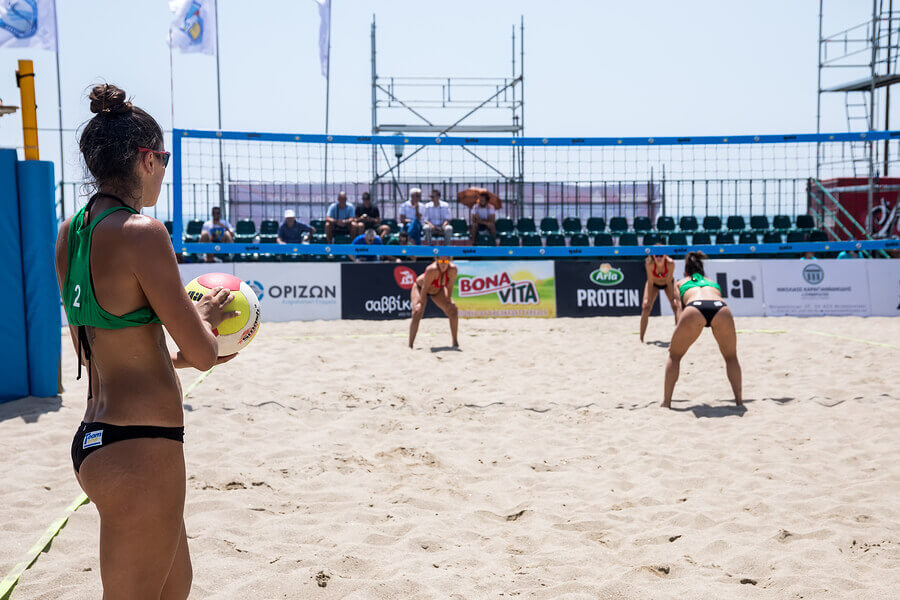Classifying Sports: Countless Ways to Organize

There are many different ways to classify the different sport disciplines that exist all over the world. For example, the number of people that participate can be a classifying factor. Or, the time of year when it’s played or the equipment that it requires can also be a form of classification. In our post today, let’s look at how sports are classified on an international level.
Just because sport classifications exist doesn’t mean that a certain discipline is limited to one group. We can mainly split sports up into three large groups: the number of participants, the season that it’s played in and specific categories.
Classifying sports by the number of participants
1. Individual sports
Just as the header suggests, individual sports have only one participating athlete per “team”. Artistic gymnastics or track and field are two popular examples. But there are also disciplines that pit two athletes against each other, such as in judo, singles’ tennis or boxing.
2. Team sports
Unlike individual sports, team sports teams are formed by a group of athletes. These groups can be pairs, such as in doubles’ tennis, badminton, table tennis or beach volleyball. Or, the teams can be larger such as in the case of soccer, rugby, basketball, handball, volleyball, etc.
Classifying by the season or place of the sport
3. Classifying summer sports
Summer sports take place during hot months as they are typically held outdoors. Some examples of summer sports include track and field, cycling, open water swimming, sailing, kayaking, etc. People often refer to them as “outdoor” or “outside sports”.

4. Winter sports
Winter sports require snow or ice. Consequently, they’re winter-exclusive or take place on artificial ice rinks or slopes. The Winter Olympics include the majority of these sports in their games: ice skating, snowboarding, curling, skiing, speed skating, ice hockey and more.
5. Classifying indoor sports
Indoor sports refer to those that take place in a closed space. While most of them were created to play during the colder months, participants can play all year round. Indoor sports include basketball, indoor soccer, volleyball, handball, boxing and table tennis.
Classifying by equipment
6. Ball sports
Another way to classify sports is by the equipment it requires. In ball sports, balls can vary in size and shape. Ball sports often are the most popular sports throughout the world. Some examples include soccer, baseball, rugby, tennis, volleyball, handball, basketball, pelota, softball, and badminton.
7. Combat sports
In combat sports, two athletes, one from each team, face off. The participants aim to knock down their opponent or hit them with proper form during the fight. Combat sports include boxing, muay Thai, fencing, judo, taekwondo, and aikido.
8. Motorsports
Motorsports require a motor vehicle. Examples of motorsports are car, motorcycle or boat racing. There are sub-categories that fall under the main categories such as rally, motocross, enduro, raid, etc.
9. Water sports
Water sports is an umbrella term for a large group of different sports as it encompasses all disciplines that take place in water (swimming, diving, synchronized swimming, open water swimming, water polo), on water (canoeing, sailing, surfing, rowing, water skiing, kite-surfing) or underwater (snorkeling or scuba diving).
10. Air sports
In the case of air sports, the field is the sky itself. Some sports that fall into this category include skydiving, aeromodelling, and paragliding.

11. Sliding or gliding sports
Next up are sliding or gliding sports. These require participants to move their body across a surface. Some examples include skiing, bobsleigh, skeleton or luge.
Classifying sports: lane-based disciplines
Lastly, another form of classification is the area where participants take part in a sport. Lane sports tend to fall under track and field varieties (racing, marathons, hurdles, pole vaulting, high jump, discus throwing) and others such as track cycling.
As we previously mentioned, sports can fall under more than one kind of classification. In any case, the main objective should be to rope the like sports together and there are many ways to start organizing. Which sports category seems most interesting to you?
There are many different ways to classify the different sport disciplines that exist all over the world. For example, the number of people that participate can be a classifying factor. Or, the time of year when it’s played or the equipment that it requires can also be a form of classification. In our post today, let’s look at how sports are classified on an international level.
Just because sport classifications exist doesn’t mean that a certain discipline is limited to one group. We can mainly split sports up into three large groups: the number of participants, the season that it’s played in and specific categories.
Classifying sports by the number of participants
1. Individual sports
Just as the header suggests, individual sports have only one participating athlete per “team”. Artistic gymnastics or track and field are two popular examples. But there are also disciplines that pit two athletes against each other, such as in judo, singles’ tennis or boxing.
2. Team sports
Unlike individual sports, team sports teams are formed by a group of athletes. These groups can be pairs, such as in doubles’ tennis, badminton, table tennis or beach volleyball. Or, the teams can be larger such as in the case of soccer, rugby, basketball, handball, volleyball, etc.
Classifying by the season or place of the sport
3. Classifying summer sports
Summer sports take place during hot months as they are typically held outdoors. Some examples of summer sports include track and field, cycling, open water swimming, sailing, kayaking, etc. People often refer to them as “outdoor” or “outside sports”.

4. Winter sports
Winter sports require snow or ice. Consequently, they’re winter-exclusive or take place on artificial ice rinks or slopes. The Winter Olympics include the majority of these sports in their games: ice skating, snowboarding, curling, skiing, speed skating, ice hockey and more.
5. Classifying indoor sports
Indoor sports refer to those that take place in a closed space. While most of them were created to play during the colder months, participants can play all year round. Indoor sports include basketball, indoor soccer, volleyball, handball, boxing and table tennis.
Classifying by equipment
6. Ball sports
Another way to classify sports is by the equipment it requires. In ball sports, balls can vary in size and shape. Ball sports often are the most popular sports throughout the world. Some examples include soccer, baseball, rugby, tennis, volleyball, handball, basketball, pelota, softball, and badminton.
7. Combat sports
In combat sports, two athletes, one from each team, face off. The participants aim to knock down their opponent or hit them with proper form during the fight. Combat sports include boxing, muay Thai, fencing, judo, taekwondo, and aikido.
8. Motorsports
Motorsports require a motor vehicle. Examples of motorsports are car, motorcycle or boat racing. There are sub-categories that fall under the main categories such as rally, motocross, enduro, raid, etc.
9. Water sports
Water sports is an umbrella term for a large group of different sports as it encompasses all disciplines that take place in water (swimming, diving, synchronized swimming, open water swimming, water polo), on water (canoeing, sailing, surfing, rowing, water skiing, kite-surfing) or underwater (snorkeling or scuba diving).
10. Air sports
In the case of air sports, the field is the sky itself. Some sports that fall into this category include skydiving, aeromodelling, and paragliding.

11. Sliding or gliding sports
Next up are sliding or gliding sports. These require participants to move their body across a surface. Some examples include skiing, bobsleigh, skeleton or luge.
Classifying sports: lane-based disciplines
Lastly, another form of classification is the area where participants take part in a sport. Lane sports tend to fall under track and field varieties (racing, marathons, hurdles, pole vaulting, high jump, discus throwing) and others such as track cycling.
As we previously mentioned, sports can fall under more than one kind of classification. In any case, the main objective should be to rope the like sports together and there are many ways to start organizing. Which sports category seems most interesting to you?
All cited sources were thoroughly reviewed by our team to ensure their quality, reliability, currency, and validity. The bibliography of this article was considered reliable and of academic or scientific accuracy.
- McGarry, T., Anderson, D. I., Wallace, S. A., Hughes, M. D., & Franks, I. M. (2002). Sport competition as a dynamical self-organizing system. Journal of Sports Sciences. https://doi.org/10.1080/026404102320675620
This text is provided for informational purposes only and does not replace consultation with a professional. If in doubt, consult your specialist.








